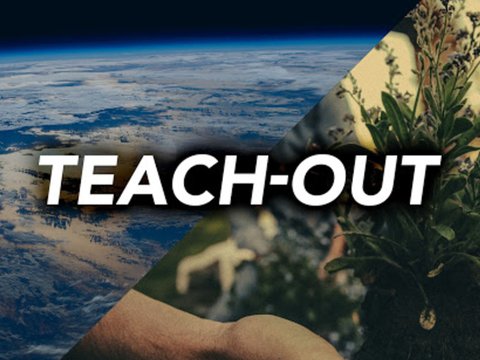How Can We Communicate and Connect about Sustainability?
Jessica Fogel, a Professor Emerita of Dance at University of Michigan and Choreographer, discusses the way dance and the arts can help people connect to issues of sustainability. She explores the ways dance invites a physical response from the audience and how that leads to a different connection to the environment.
Excerpt From

Transcript
0:00 my name is Jessica Fogle I'm a professor 0:02 emeritus of dance here at University of 0:04 Michigan where I taught for 35 years I'm 0:09 a dancer and choreographer I've created 0:11 many dances for the traditional 0:13 proscenium stage and I've also created a 0:16 number of large-scale projects for 0:20 alternative sites in rural or urban 0:23 settings in which I've probed the 0:25 stories embedded in those sites and 0:27 often worked with a large 0:29 multidisciplinary team to create these 0:32 projects the arts play I think a really 0:36 important role in the future of 0:38 sustainability because the arts have a 0:42 unique way of approaching ideas through 0:46 the senses and getting audiences and the 0:49 public to connect in a visceral and 0:51 emotional way so it's not a question of 0:54 reading about things in a newspaper or 0:57 learning about data in terms of huge 1:00 challenges like climate change but 1:03 actually connecting on a personal level 1:05 and I think dance in particular and the 1:09 kind of dances I've been creating bring 1:12 the public into a place and get them to 1:16 connect through their bodies through 1:18 their senses and to develop a connection 1:22 and an empathy that will hopefully 1:24 promote desire for change and action in 1:29 favor of the environment and in support 1:33 of the environment so I think the arts 1:35 have that creative spirit that gets 1:38 people involved in a very connected way 1:41 all of the Arts invite a closer 1:45 engagement with one's senses and I think 1:48 dance in particular awakes a kind of 1:51 physical response in an audience because 1:54 an audience is watching dance with their 1:57 mirror neurons as it were they're 1:59 empathizing with the movement they're 2:01 seeing also in the kinds of dances I've 2:04 been creating in alternate sites often 2:07 the audience is moving along with the 2:10 performers they're traveling through a 2:12 site and what we call 2:13 a promenade performance and in that way 2:15 their their active partners they're not 2:19 sitting there passively in the in the 2:21 dark as they do in a traditional theater 2:24 but rather they are moving through the 2:26 performance they're contributing to the 2:28 energy of the performance they're 2:31 watching others watch the performance it 2:33 becomes a different kind of communal 2:35 experience which has a different kind of 2:38 impact through the skin through the 2:41 muscles through the senses I think we 2:43 have to keep seeking new ways for 2:47 speaking about a sustainable future and 2:50 finding ways to reach more people one on 2:52 one one person at a time and I think the 2:55 arts can do that I think that's what the 2:58 arts are about it so it's a one-on-one 3:00 experience sometimes it's a communal 3:02 experience but it has to hit a person to 3:05 the core it's not it's not data and it's 3:07 not off in the future it's now and it's 3:10 it's finding ways for the public to 3:14 really empathize and connect with the 3:17 planet and with place and with 3:19 environment and really care about it